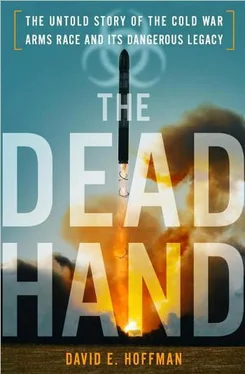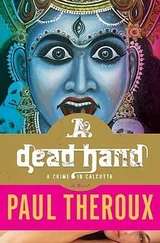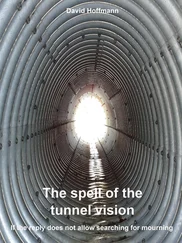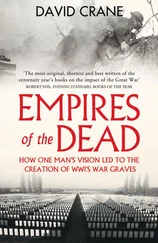On December 1, voters in Ukraine approved a referendum on independence. Then, on December 8, at Belovezhskaya Pushcha, a hunting resort outside the city of Brest in Belarus, Yeltsin and the leaders of Ukraine and Belarus declared the Soviet Union dissolved and formed a new Commonwealth of Independent States without telling Gorbachev. The collapse of the center was accelerated by Yeltsin’s fierce determination to wrest power from Gorbachev. Back in Moscow, Yeltsin went to the Soviet defense ministry in a conspicuous effort to woo the military. Baker recalled, “These moves were the stuff of a geopolitical nightmare. Two Kremlin heavyweights, jockeying for political power, calling on the army to follow them, and raising the specter of civil war—with nuclear weapons thrown into the mix.” The situation was so unsettled that Baker, due to give a speech at Princeton on December 12, could not decide what to call the dying Soviet Union. In the end, he settled for the awkward phrase “Russia, Ukraine, the republics, and any common entities.” Baker said in the speech, “If, during the Cold War, we spent trillions of dollars on missiles and bombers to destroy Soviet nuclear weapons in time of war, surely now we can spend just millions of dollars to actually destroy and help control those same nuclear weapons in time of peace.” 26Bush signed the Nunn-Lugar bill the same day.
The worst fears of Nunn, Baker and others were that loose nukes, fast money and a weak state would all come together, perhaps in some kind of proliferation-for-profit syndicate. A glimpse of this possibility materialized at 15 Ulitsa Varvarka, a pleasant street near the old Central Committee offices in the heart of Moscow. There, the International Chetek Corporation opened a makeshift but bustling one-room office in 1991. The name of the company was derived from the Russian words for man, chelovek , technologies, tekhnologii , and capital, kapital . The capital came from several leading enterprises in the military-industrial complex, including Arzamas-16, the nuclear weapons design laboratory based in the closed city of Sarov, 233 miles east of Moscow, where the Soviet Union had first developed a nuclear weapon and Andrei Sakharov had worked on the hydrogen bomb. Chetek was offering to sell a special service: underground nuclear explosions to destroy chemical and toxic industrial wastes, munitions, nuclear reactors or anything else by incinerating it with thermonuclear blasts two thousand feet underground—for a fee. 27
This was the first known case of Soviet weapons scientists seeking to privatize their knowledge. A frequent booster of the enterprise in 1991 was Viktor Mikhailov, the chain-smoking deputy atomic energy minister, who had visited Washington in October, warning of the need to build safe storage for nuclear warheads. Mikhailov had spent years in the Soviet nuclear-testing program. Peaceful nuclear explosions—using blasts for digging canals, mining or other purposes besides war—had been carried out by both the United States and Soviet Union, but eventually discarded, in part because of environmental hazards. 28The last Soviet explosion was in 1988. What was startling about Chetek was the idea that nuclear explosions were for sale from a weapons laboratory.
In December, a group of American experts on arms control and nuclear weapons arrived in Moscow for a joint workshop with Soviet specialists on warhead verification and dismantlement. On their first night, they were surprised to find that Chetek was hosting a banquet for them at a former Communist Party training school. The toastmaster was Alexei Leonov, a commander of the joint Apollo-Soyuz missions in the 1970s and the first Soviet cosmonaut to walk in space. Mikhailov was there, too, along with officials from Arzamas-16. On entering the banquet room, each member of the delegation was handed a plastic bag containing small souvenirs and a press release, at the top of which was printed both the name of the private company and the government ministry. Mikhailov signed as deputy atomic energy minister, along with Vladimir Dmitriev, president of Chetek. The press release was defensive in tone—responding to news reports about Chetek’s activities in recent months—but it also confirmed some of the worst fears of the Americans. It said that Chetek had signed a deal with Arzamas to use nuclear explosions for the destruction of highly toxic industrial wastes. And the nuclear devices? Just to be clear, Chetek “did not have, does not have, and can not have access to nuclear devices, their components or any knowledge about them.” The press release said that “practical work” in nuclear weapons would still be done by the government. 29
When they entered the hall, the Americans saw right away what was happening. “Various elements of the national security establishment were maneuvering to privatize themselves and go into business,” recalled Christopher E. Paine, of the Natural Resources Defense Council, who attended. “The elements of the Soviet state that you would almost least expect to be rushing into business were in fact the ones that were doing it, and trying to earn a buck off whatever asset they had, including surplus nuclear weapons. A lot of the people we met from the weapons laboratories were kind of innocent in a strange way, innocent in the ways of the world. They lived in this bubble all of their lives, and they didn’t have an idea of business, they didn’t know what it was.”
One of the Soviet officials at the banquet was Alexander Tchernyshev, who had worked for many years with Mikhailov on Soviet nuclear tests. Tchernyshev headed an office at Arzamas-16, but also represented Chetek. It was hard to see where the government-operated nuclear weapons laboratory ended and the private company began. Tchernyshev presented the Americans with a Chetek business card that also carried his Arzamas affiliation.
When Fred Hiatt of the Washington Post went to the Chetek offices in Moscow a few weeks later, he interviewed Tchernyshev, who explained that the nuclear weapons establishment, long hidden behind barbed wire in closed cities, was falling on hard times with the collapse of the Soviet economy. “Representatives of our institute are running around the region looking for food, but everything is for barter,” he said. “Does it mean we will have to trade bombs for meat? It’s absurd.” 30
According to its advertising literature, Chetek planned to bring in clients and finance the research for blasting the wastes, while the government would actually handle the explosions. The first demonstration was planned for 1992 at Novaya Zemlya, the Soviet nuclear weapons testing range in the Arctic. In the end, Chetek never carried out the demonstration because of a test ban that remained in place, but it was an early and ominous example of what could happen if desperate weapons scientists went into business. It was also a harbinger of a phenomenon that would spread like wildfire in Russia in the 1990s: the hijacking of state resources and expertise for private gain.
As the Soviet economy nose-dived in the autumn of 1991, Nunn and others wondered whether the gargantuan Soviet military-industrial complex could be transformed to serve the civilian economy. This idea was known as “defense conversion” and Gorbachev once harbored great hopes for it: retooling tank factories, shipyards and missile design bureaus to churn out refrigerators, washing machines and computers. Gorbachev had first begun to push for conversion in earnest after his United Nations speech in 1988, but it proved difficult to convert swords to plowshares. The military and its complex of factories stiffly resisted. Typical was Alexander Sarkisov, chief engine designer for Soviet fighter jets. “Look, in the world market, a kilo of a modern fighter plane costs over $2,000, and a kilo of saucepans, $1.” It didn’t make sense, he added, to switch from jet fighters to saucepans. Some defense factories made shoddy civilian goods; others simply atrophied. 31
Читать дальше












